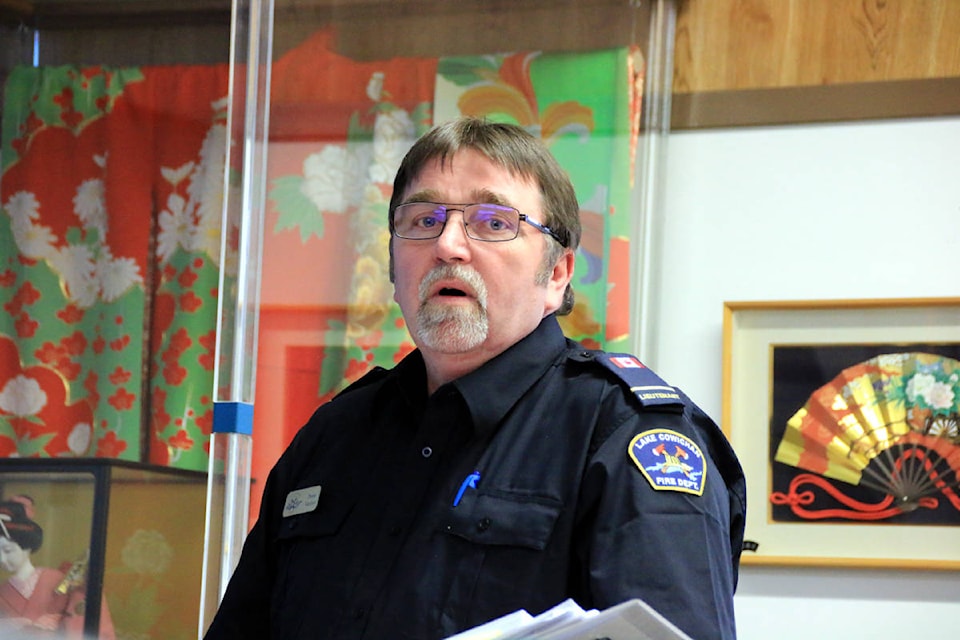The Lake Cowichan Fire Department is attempting to increase fire safety for area residents by making homeowners aware of fire hazards on and near their properties.
Fire chief Doug Knott and risk assessment officer Steve Vatcher pitched their idea to Lake Cowichan’s mayor and councillors Tuesday, April 4 and, even at the end of a long evening, everyone was enthusiastic about what might be accomplished.
What’s really at stake are the so-called “interface” areas — those sections of land where the forest backs onto built-up parts of the community. When forest fires start, the blowing sparks and fiery debris, called “firebrands” by firefighters can speedily cause havoc in communities that are unprepared.
However, Knott and Vatcher told council, there are a number of surprisingly simple ways of dealing with many problems and the results can be as astonishing as those pictures we have all seen on the TV: homes that miraculously are still standing after a big fire has swept through a region.
And, especially for small, rural fire departments like Lake Cowichan’s, firefighters have good reason to be concerned about forest fires in the interface area, Knott said, explaining to council that, with the number of pieces of equipment and personnel available to the Lake Cowichan department, chances are small that the firefighters could fight more than two or three fires at once.
Under circumstances where a whole neighbourhood is affected, the fire department has to use the concept of triage: like doctors in a battlefield hospital who have to try to save those who can be saved, firefighters would have to decide which houses were most likely to survive the fire.
It’s not an easy decision but it can be made easier if the fire department knows the residents of an area have already practised defensive homeowning by clearing away fire hazards beforehand.
Vatcher explained that the Fire Smart program, which will be rolled out in Lake Cowichan at a special meeting organized by the fire department on May 6, is all about inspiring homeowners to get together in their neighbourhoods and see what can be done about obvious problems.
These problems are more obvious than might first be thought, and some of the solutions are equally so, the firemen told council.
The first is trying to reduce hazards right beside your house. Some of these are relatively easy fixes: moving that stack of dry firewood from where it’s leaning against the house is a good place to start, and another is getting rid of those evergreen shrubs planted right up against the building.
Suggestions that involve a bit more work include checking vents to ensure they have mesh to stop firebrands from blowing inside the building, considering closing in open spaces under porches or sundecks, and, if new roofing is on the to-do list, looking at fire safe asphalt or metal roofing instead of shingles or shakes.
Another family friendly project is taking a long tape measure outdoors and making sure you have a good, cleared perimeter around your house. That’s also a great time to really look at what’s out there. Like the single sock that’s been sitting on the mantel so long no one can see it anymore, there are hazards that have become part of the scenery around your house.
Do you have a pile of bits and pieces of old lumber just behind the garage? Do you still have lots of blown-down or broken branches from this winter’s storms lying within easy reach of the house? Are there old gas cans sitting forgotten on the other side of the sundeck? Do you have a wooden fence attached to part of the house?
Then, it’s really useful to look a little farther away from the building, and this is where neighbours can get together, ensuring that fires have less chance of jumping from house to house.
Vatcher said he and Knott are looking forward to getting neighbourhoods interested in forming groups because, “We are one of the progressive fire departments; we are a progressive community.”
